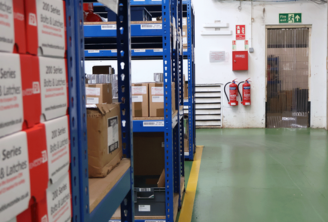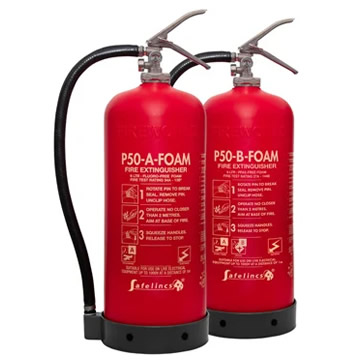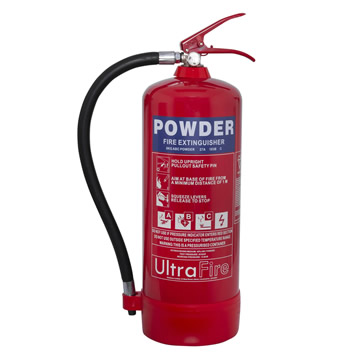-
Contact
Sales & Customer Service
0800 612 6537 support@safelincs.co.uk Live ChatDelivery Enquiries
0800 077 6149 - Resources
Fire & Safety Solutions
CALL OUR TEAM NOW 0800 612 6537
Also FREE from UK mobiles
Free Delivery
on 100s of Products
Live Chat - Online
Instant help & Advice
Trade Discounts
and exclusive pricing
0% Credit Available
Open an account now
5 Star Customer Feedback
Fire Extinguishers for Warehouses
In most warehouses there will usually be large amounts of packaging and the possibility of some electrical equipment. As warehouses are generally larger areas than most rooms it is usually recommended to install larger extinguishers to cover more space.

P50 Eco Foam Service-Free Fire Extinguishers
As the contents of a warehouse is often varied, an extinguisher to cover multiple fire risks is essential. P50 A-Foam or B-Foam Eco Fire Extinguishers are highly effective at fighting fires fuelled by solid combustibles and also flammable liquid fires such as petrol, diesel and paraffin, depending on the fire risk in the warehouse.
Unlike some other foam extinguishers, P50 A-Foam and B-Foam extinguishers are dielectrically tested, making them safe to use on live electrical equipment such as manufacturing equipment or lighting (up to 1 kV electricity from 1m distance).
The P50 Foam Service-Free Fire Extinguisher can be used as a replacement for a traditional foam and CO2, or Water and CO2 combination. They are also "service-free", meaning they do not require servicing annually by a technician. Switching to P50 extinguishers could save you up to 50% on the cost of your fire extinguishers.
Fire Classification
P50 Eco Foam Fire Extinguishers are suitable for use on the following types of fire.
Powder Fire Extinguisher
Powder fire extinguishers are often seen in warehouses, especially as they are typically larger well ventilated spaces. This type of extinguisher is suitable for use on Class A fires involving solid materials, Class B fires involving flammable liquids, Class C fires involving flammable gases and fires involving electrical equipment. Powder fire extinguishers prevent the chemical process during combustion, providing rapid fire knock down.
Depending on the warehouse contents and assuming there is suitable ventilation from roller shutter doors etc, then a powder extinguisher may be suitable, especially for incoming vehicles.
However, many warehouses have multiple fire risks and the fire points would normally consist of a water or a foam extinguisher coupled with a CO2 extinguisher. This ensures appropriate fire fighting capabilities covering the most likely fire risks. CO2 is effective at tackling electrical fires, whilst water and foam provided general coverage for class A (e.g. wood, paper) fires.
Fire Classification
Powder Fire Extinguishers are suitable for use on the following types of fire.
Related Guides
Read our guide to fire classes and guide to fire extinguisher types to learn more.
Reviewed: 02/11/2021 (doc:14 V1.1). Our articles are reviewed regularly. However, any changes made to standards or legislation following the review date will not have been considered. Please note that we provide abridged, easy-to-understand guidance. To make detailed decisions about your fire safety provisions, you might require further advice or need to consult the full standards and legislation.





















